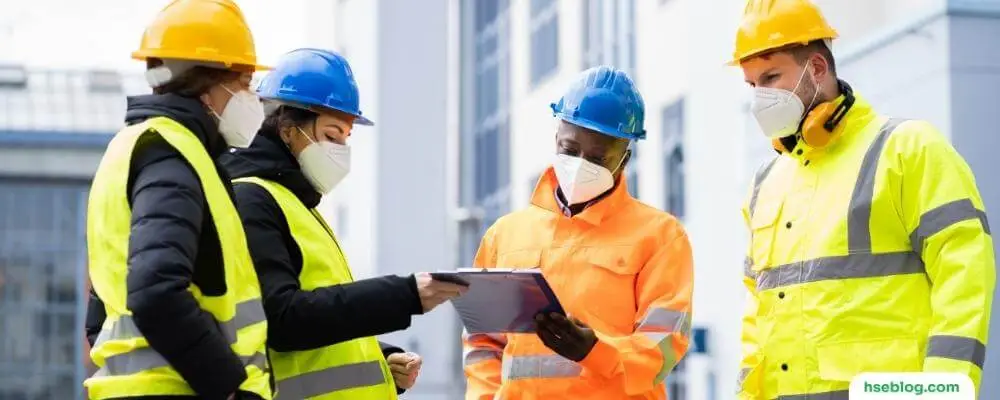Promoting a workplace safety culture is an integral part of successful business operations. Safety recognition programs are vital in this regard, playing a key role in preventing accidents, fostering a positive environment, and demonstrating a company’s commitment to its employees’ health and welfare.
In this in-depth blog post, we will explore ten types of safety recognition programs that can be implemented in various organizational settings. From innovative initiatives like “Safety Bucks” and “Bonus Programs” to empowering “Safety Training Programs” and collaborative “Peer-to-Peer Recognition Programs,” we will provide a comprehensive understanding of diverse strategies that can effectively encourage safety culture in your organization.
Whether starting from scratch or enhancing your current safety practices, this blog will equip you with practical insights and options to create an effective safety recognition program. Join us as we delve into workplace safety, and take a step toward making your organization a safer workplace.
Types Of Safety Recognition Programs
Safety recognition programs are initiatives organizations implement to promote and reward safe behavior and practices in the workplace. These programs aim to create a safety culture and enhance employees’ well-being. Here are some common types of safety recognition programs:
1. Safety Bucks
The Safety Bucks program is a highly engaging and motivational strategy to promote safety in the workplace. This innovative program involves giving employees a form of faux currency, commonly referred to as “Safety Bucks,” as a reward when they are observed adhering to safety protocols or exhibiting safety-conscious behavior.
The allocation of safety bucks is typically determined by supervisors or safety officers. They monitor employee activities and identify those taking their safety responsibilities seriously. The primary aim is encouraging employees to actively demonstrate and prioritize workplace safety.
The interesting part of the program is that these safety bucks can be redeemed for actual goods or services within the company or at a partnering local store. They could be exchanged for meals, merchandise, or gifts in the company cafeteria. This strategy not only encourages safe practices but also increases employee morale, boosting the overall atmosphere at the workplace.

2. Bonus Programs
Bonus Programs can be quite effective in encouraging employees to actively report potential hazards or risky situations in the workplace. The basic principle of this program is to offer a financial reward, or bonus, to employees who identify and report hazards that could cause serious physical harm or fatalities.
The monetary value of the bonus may vary, depending on the program’s structure. Some companies might offer a fixed amount, while others may determine the bonus based on a percentage of the potential direct cost of an accident that the reported hazard could have caused.
Such a bonus program incentivizes the active participation of employees in identifying and addressing potential risks. This proactive approach can prevent potential accidents, thus fostering a robust safety culture in the organization.
3. Safety Heroes
The Safety Heroes program is a prestigious recognition platform to honor the most safety-conscious employees. Every month or quarter, the company selects and recognizes an individual who has demonstrated exemplary safety practices and positively influenced the overall safety culture at the workplace.
This individual dubbed the “Safety Hero,” receives public recognition from their colleagues, superiors, and management. This recognition is an honor for the Safety Hero and a motivational factor for other employees to adhere to safety protocols and maintain a safe work environment.
4. Safety Certificates
Safety Certificates are another recognition awarded to employees or teams demonstrating outstanding commitment to workplace safety. Companies can customize these certificates with their logo and present them at staff meetings regularly, like monthly or quarterly.
The presentation of safety certificates fosters a sense of employee pride, reinforcing the importance of safety in the workplace. This recognition also encourages employees to strive for a safer work environment, strengthening the organization’s safety culture.
5. Safety Awards
Safety Awards are a great recognition typically presented during an end-of-year celebration or company-wide event. These awards are given to employees or teams that have excelled in promoting safety throughout the year.
Safety awards can come in various forms, such as a certificate of achievement, a plaque, or a trophy, which are presented to deserving individuals. These awards not only commemorate the efforts of these safety ambassadors but also serve as a powerful reminder of the company’s unwavering commitment to safety. It also acts as an incentive for all employees to strive for excellence in workplace safety.

6. Safety Training Programs
Safety Training Programs educate and empower employees about safety protocols and the importance of adhering to them. These programs can take many forms, such as workshops, seminars, or online courses, which equip employees with essential knowledge and skills to maintain safety at the workplace.
In addition, these programs can also have a recognition aspect. For instance, employees who complete the training program can be awarded certificates or badges displayed at their workstations. This helps to motivate employees to participate in safety training and encourages a culture of continuous learning.
7. Safety Milestone Celebrations
Celebrating safety milestones is another powerful way to recognize safety in the workplace. This involves acknowledging the achievement of certain safety goals or milestones, such as reaching a specific number of days without any workplace injuries or accidents.
The celebrations can include company-wide announcements, team lunches, or even award ceremonies. This type of recognition not only highlights the collective efforts of the entire team in maintaining a safe work environment but also reinforces the importance of every individual’s contribution to workplace safety.
8. Peer-to-Peer Recognition Programs
Peer-to-Peer Recognition Programs foster a culture of shared responsibility and mutual recognition among employees. This involves encouraging employees to recognize and appreciate their peers who demonstrate excellent safety practices.
This program allows employees to nominate their colleagues for safety awards, strengthening their sense of community and teamwork. Furthermore, it encourages everyone to be more observant and supportive of each other’s safety practices, fostering a safer and more cooperative work environment.
9. Safety Suggestion Programs
Safety Suggestion Programs are designed to involve employees in improving workplace safety. Employees are encouraged to suggest safety improvements or identify potential hazards. Those whose suggestions are implemented can be recognized and rewarded.
This boosts morale and allows employees to feel valued for their insights and ideas. It demonstrates the company’s commitment to safety and shows that every employee’s contribution towards safety improvement is appreciated.

10. Safety Ambassador Programs
In the Safety Ambassador Program, selected employees serve as safety ambassadors for their departments or the entire company. These individuals promote safety, share safety updates, and encourage their colleagues to adhere to safety guidelines.
Safety ambassadors are often chosen based on their dedication to safety and ability to inspire others. By recognizing and highlighting the efforts of these ambassadors, companies can promote a safety culture and make every individual feel involved in maintaining workplace safety.
Remember, the key to the success of any safety recognition program is to ensure it resonates with your employees and aligns with your organization’s culture and values. You can create a safer and more positive work environment by selecting the right program and implementing it effectively.
Conclusion
In conclusion, implementing effective safety recognition programs is a powerful strategy to promote safety culture and prioritize employee well-being in the workplace. The ten different types of programs we’ve explored, ranging from “Safety Bucks” and “Bonus Programs” to “Safety Training Programs” and “Peer-to-Peer Recognition Programs,” offer a variety of ways to encourage safe practices, reward dedication, and foster a proactive safety environment.
Choosing a program that aligns with your organization’s values and resonates with your employees is crucial, thus ensuring everyone feels valued and motivated to contribute to a safe workplace. Remember, a safe workplace is more productive and a testament to a company’s commitment to its most important asset – its people.

